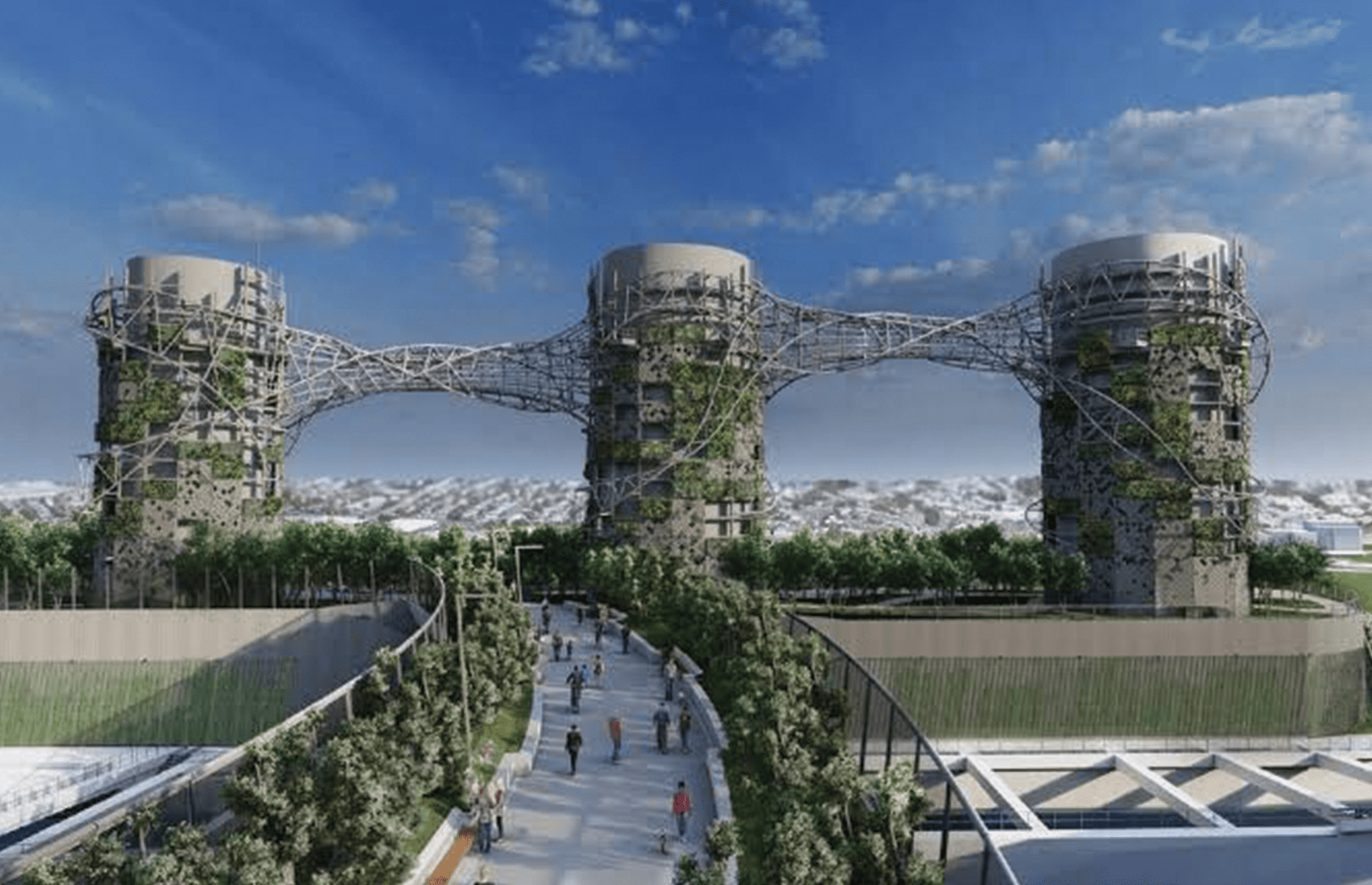With less than a year until WestConnex Rozelle Interchange’s scheduled 2023 opening, the mammoth spaghetti junction is finally taking form. A complex web of concrete and tarmac, the interchange is touted as the missing link in Sydney’s roadways, connecting the M4-M5 link tunnels with the City West Link, bypassing the busy Victoria Road via an underground route and providing a connection to the future Western Harbour Tunnel. However, since its conception, the project has been mired in controversy, with residents and activists groups deeming it a fundamental planning error, recently calling for a class action.
Community opposition to the project originated long before construction began, given that toll roads and highways themselves are an inherently outdated form of public transport. A relic of 1950s urban planning, they divide communities, severing walkable networks and carving up suburbs. The suburb of Haberfield is an example of Westconnex’s path of destruction, with the NSW government destroying 53 houses, 23 apartments and 9 businesses through forced acquisitions in the heritage listed suburb, limiting community access to amenities such as Timbrell park.
Westconnex’s proposed benefits, such as reduced travel times and congestion, are myths that continue to be spread by highway builders everywhere. Whilst traffic does initially decrease, historically, this relief has been only temporary, with the new road creating an induced demand that encourages people to drive. Whilst other international cities such as Paris, New York and Seoul have begun demolishing highways and limiting car use in favour of more sustainable and efficient public transport options for this reason, NSW has only increased their prevalence, often motivated by profit rather than public interest. For these reasons, Australia now has one of the highest levels of car dependence in the world, with transport emissions increasing nearly 60 per cent since 1990.
At present, much of the motorway now lies completed, with the final piece in the puzzle being the Rozelle Interchange. With construction now well underway, it is hard to deny that the site is a visual eyesore. A tangled mess of both aboveground and underground networks, roads and overpasses loop in and around each other like a dystopian metropolis. In amongst the grey concrete lie three mammoth and unfiltered smokestacks, which will transport the fumes collected in the underpass up into the atmosphere. Impossible to miss, these concrete pillars have forever changed the Rozelle skyline – their lack of filtration sparking major pollution fears in local activist groups.
This blight on the city skyline is hardly improved by its surrounding art installation. Designed by Chris Fox, the artwork encases these three stacks in twisting steel mesh, with zinc panels and garden walls; a feeble attempt at greenwashing. Bizarrely, under these concrete pillars will be 9.5 hectares of parkland, offering little consolation for local residents. Features include sports fields, courts, and “wetlands”, which in reality are glamorised pollution ponds for wastewater drawn out of the Westconnex interchange. Consequently, rather than realising its full potential as a valuable community asset, the park instead is a nightmarish juxtaposition of greenery and industry.
The construction of the project has proved as troublesome as its genesis, as the underground drilling and tunnelling used during the construction of the Westconnex Tunnel has caused multiple landowners across Sydney to report damage to their properties. Issues such as cracks, broken windows, and skewed door frames are being reported from St Peters to Rozelle. Due to the high number of complaints, a class action is now being investigated by law firm Omni Bridgeway, alongside Dentons Australia. The firms are currently collecting data to determine the volume and extent of the damage reported, in order to determine whether there is a large enough body of claimants for a class action to be worthwhile. The firms predict that a large number of these property damage claims will arise from the Stage 3 Rozelle interchange tunnelling. This tunnel is significantly wider and shallower than the recently constructed M4 and M5 tunnels, and runs under older, densely built suburbs which are more vulnerable to ground movements.
Local resident and member of facebook group No WestCONnex: Public Transport, Andrew Chuter, has staunchly opposed the highway since it was first proposed.
“The main concern is the same concern with all urban motorways: they are a fundamental planning error. They are inefficient and eye-wateringly expensive. We desperately need a massive shift to public and active transport,” he writes.
He is additionally concerned that “the exhaust stacks are unfiltered, causing localised air pollution such as carcinogenic PM2.5 particles. However, the greenhouse emissions, mainly CO2, spread all around the planet and exacerbate the climate emergency. We must stop urban motorways as urgently as we must stop coal and gas mines”.
Not only is this infrastructure ecologically and socially damaging, but it also is being delivered with an eye-watering fee. Motorists can expect to be charged $1.40 to enter the interchange, with a distance based toll charging 50c/kilometre after that. These tolls will be capped at $10 when the motorway opens, but will continue to rise as the tolls increase at 4 percent each year. However, rather than this money going back to the government to fund future infrastructure, it appears that the sole beneficiary of these roads will be Transurban, a multinational road operating company which acquired full ownership of WestConnex sometime in 2021.
The Kirby report sums it up well: “As with other aspects of WestConnex, one is left with the impression that the Government’s real interest is the creation of yet another asset that they can sell, where car users thereafter have to pay ever increasing tolls to some large company such as Transurban.”





